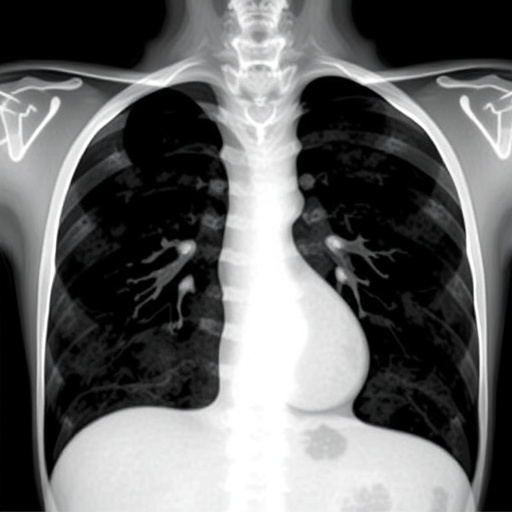Invasive lung squamous cell carcinoma (LUSC) represents a formidable challenge within thoracic oncology, accounting for roughly twenty-five percent of all lung cancer cases worldwide. Despite its prevalence, therapeutic avenues remain substantially restricted, largely attributable to the scarcity of readily targetable molecular abnormalities. This therapeutic impasse has redirected scientific inquiry towards histopathological markers as critical prognostic tools, aiming to refine clinical decision-making and personalize patient care. In a landmark advancement, the International Association for the Study of Lung Cancer (IASLC) Pathology Committee has introduced a pioneering grading system for invasive LUSC grounded primarily in the concept of tumor budding, as detailed in the current issue of the Journal of Thoracic Oncology.
The lack of a standardized grading system specific to LUSC has long hindered consistent prognostication and treatment stratification. Tumor grading systems play a pivotal role across oncology disciplines, informing therapeutic approaches and shaping patient management protocols. However, unlike other histological cancer subtypes, LUSC has not benefited from a universally accepted grading framework. Addressing this gap, the IASLC undertook a comprehensive, multicentric study utilizing international cohorts to design a grading system both practical and prognostically robust.
Researchers meticulously analyzed an array of histological parameters including tumor budding, the smallest tumor nest size, nuclear dimensions, and tumor spread through air spaces (STAS). These features were examined in two distinct training datasets, encompassing a combined total of 689 cases of resected LUSC without prior neoadjuvant therapy, drawn from three separate institutions. Through rigorous statistical methodologies, tumor budding emerged as the singular histologic feature independently associated with both recurrence-free survival (RFS) and overall survival (OS) across both training cohorts.
Tumor budding—a phenomenon characterized by isolated single cells or small clusters of up to four tumor cells at the invasive front—serves as an indicator of aggressive tumor behavior and epithelial-mesenchymal transition. Recognizing its prognostic significance, the IASLC team established a two-tiered grading system based exclusively on tumor budding counts. They adopted a threshold of 10 buds per 0.785 mm², mirroring criteria previously validated by the International Tumor Budding Consensus Conference (ITBCC) in colorectal cancer, thereby delineating low-grade tumors (0-9 buds) from high-grade counterparts (≥10 buds).
Validation of this two-tiered paradigm was conducted on an extensive test set comprising 827 cases sourced from five international centers. The analysis revealed striking prognostic demarcations: patients with low-grade tumors exhibited a median RFS of 4.8 years compared to just 1.6 years for high-grade tumors across the entire cohort. Even within the early-stage subset (stage I), median RFS was significantly extended in low-grade tumors (7.2 years) versus high-grade lesions (3.4 years). This clear stratification underscores tumor budding’s clinical utility as a potent prognostic biomarker within invasive LUSC.
Reproducibility—a critical attribute for any histopathological grading technique—was assessed through interobserver agreement trials among ten pathologists evaluating 25 representative LUSC cases. The resulting moderate Fleiss’ kappa coefficient of 0.524 attests to the system’s reliability in routine diagnostic settings, while simultaneously highlighting areas for continued refinement and standardization efforts within the pathology community.
Importantly, this newly proposed grading system marks a departure from current standards deployed by the American Joint Committee on Cancer (AJCC) and the Union for International Cancer Control (UICC), which typically apply uniform grading criteria across diverse non–small cell lung cancer subtypes. The IASLC’s focused approach acknowledges LUSC’s unique pathological and clinical characteristics, thereby achieving a more tailored, clinically meaningful prognostic framework.
The IASLC Pathology Committee’s effort exemplifies the consortium’s integral role in advancing lung cancer understanding and management. Through rigorous, collaborative international research and consensus-building, the committee not only publishes cutting-edge studies but also shapes educational initiatives and clinical guidelines that reverberate globally in thoracic oncology practice.
LUSC continues to be a persistent clinical enigma due to its molecular complexity and limited targeted therapy options. The reliance on morphological markers like tumor budding for risk stratification represents an actionable paradigm that could catalyze improved patient outcomes by guiding adjuvant treatment decisions and surveillance protocols. Moreover, the objective, reproducible nature of budding quantification enables its seamless translation into routine pathology workflows.
The widespread dissemination of these findings through the Journal of Thoracic Oncology—IASLC’s official journal—ensures that clinicians, pathologists, and researchers across multiple disciplines are equipped with a unified, evidence-based tool to interpret invasive LUSC pathology. This enhanced consistency in tumor grading holds promise for harmonizing multi-institutional studies and facilitating more precise clinical trials.
Looking forward, integration of tumor budding-based grading with emerging molecular and immunological markers may refine prognostication even further and unlock novel therapeutic avenues. The IASLC’s landmark study thus not only fills a critical diagnostic void but also lays a foundation for a new era of personalized medicine in lung squamous cell carcinoma.
By embracing tumor budding as the cornerstone of LUSC grading, this global initiative addresses a pressing clinical need and offers a pragmatic, scientifically substantiated framework poised to impact lung cancer practice worldwide. Such innovations epitomize the synergy of international collaboration and multidisciplinary expertise in combating thoracic malignancies.
Subject of Research: Grading system development based on tumor budding for invasive lung squamous cell carcinoma (LUSC).
Article Title: Study Recommends New Grading System for Invasive Squamous Cell Carcinoma of the Lung.
News Publication Date: October 6, 2025.
Web References: www.iaslc.org
Keywords: Lung cancer, invasive squamous cell carcinoma, tumor budding, histopathology, grading system, thoracic oncology, International Association for the Study of Lung Cancer (IASLC), recurrence-free survival, overall survival, pathology, personalized medicine.




